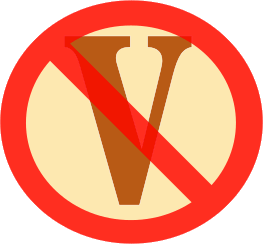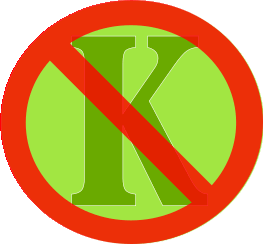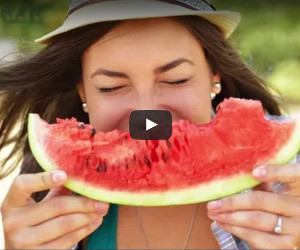SKIN COLOR ISSUES HEALTH REMEDIES

Categories in SkinSkin Color IssuesSkin TriggersSkin TypeComplexion TypeSkin OtherSkin Problem LocationLipsOverviewDon't know your body type? Take our free Dosha quiz!
TAKE THE QUIZ
32 likes  SAVE SYMPTOM SAVE SYMPTOMPale skin can come from anemia or other blood deficiencies (Vata), low basal body temperature, or poor circulation at the surface of the skin. Often, poor circulation is related to thick, rich blood (Kapha). 23 likes  SAVE SYMPTOM SAVE SYMPTOMSkin may become lusterless and dull when Circulation to the skin is poor Toxins (ama) in circulation are released through the skin Poor Circulation Poor circulation causes the skin to appear lifeless. Lusterless... 7 likes  SAVE SYMPTOM SAVE SYMPTOMPink skin appears predominantly pink in color. It can be a sign of strong, healthy circulation of blood to the surface of the skin. However, in some cases, skin may appear pink if it is inflamed, irritated, or there is sun damage. Pink or inflamed... 16 likes  SAVE SYMPTOM SAVE SYMPTOMWarm and rosy skin is a sign that blood vessels are dilated close to the surface of the skin. This may be due to a variety of causes, including lymphatic stagnation, general inflammation, toxic buildup, excess heat, fever, or chronic infection. Ideally... 33 likes  SAVE SYMPTOM SAVE SYMPTOMRedness or flushed skin is generally a sign of heat and inflammation (Pitta). This internal heat may be due to fever, skin allergies, toxins from inflammatory processes, infection, or buildup of toxins in the skin. Skin may also be flushed due to... 22 likes  SAVE SYMPTOM SAVE SYMPTOMYellowish skin can be a sign of liver distress and excess bilirubin in the blood. This may come from Vata deficiency, or an infectious process (Pitta). If the skin becomes very yellow, it is a sign of jaundice and should be treated immediately. 13 likes  SAVE SYMPTOM SAVE SYMPTOMOlive skin appears healthy and glowing. Sallow skin, on the other hand, looks slightly yellow or brown as it has lost its natural complexion. It appears dull and lifeless, particularly on the face. Olive skin is usually genetic, and tends to be... 5 likes  SAVE SYMPTOM SAVE SYMPTOMAlbinism is a rare genetic condition in which a person lacks pigment of the skin and hair. The skin is generally very pale, and the eyes can appear pink in color. It is a congenital disorder, meaning it is present from birth. Albinism occurs when a... 21 likes  SAVE SYMPTOM SAVE SYMPTOMVitiligo is a disorder where the skin loses color in certain areas, causing white patches. This lack of pigmentation may also extend to hair in affected areas. The size and rate of white patches will vary from person to person. In many cases, the... 23 likes  SAVE SYMPTOM SAVE SYMPTOMPurpura, also known as blood spots, is a condition of purple or red spots on the skin. It occurs when small blood vessels under the skin burst and leak blood. It may indicate a blood clotting disorder, low platelet levels, or vascular weakness. In... 8 likes  SAVE SYMPTOM SAVE SYMPTOMOrangish skin is skin that appears orange in color. This is a condition known as cartenosis. It may be mistaken for jaundice, which is a yellow... 8 likes  SAVE SYMPTOM SAVE SYMPTOMWhen a person is dark for their ethnicity, it could suggest the liver is deficient or toxic. 2 likes  SAVE SYMPTOM SAVE SYMPTOMA bruise is a sign of subcutaneous bleeding. To resolve, blood must be dispersed. SKIN TIPS DISCLAIMER: The pathogenesis of each person's condition is unique, and so the diet must be fit to the individual and the unique root causes of the condition in your body. The information on this page is for educational purposes only and should not be used to treat a medical condition. It is not a substitute for medical care. Please check with your doctor before making any changes to your health and wellness routine. HOW AYURVEDA WORKSARE YOU WONDERING HOW AYURVEDA CAN HELP YOU?WHY IS AYURVEDA THE RIGHT SOLUTION?Ayurveda strengthens the body while opposing disorders. It takes a holistic, systemic approach that looks at the whole body. Ayurveda shows how to interpret signs and symptoms of imbalance, and how to address them using diet, lifestyle adjustments, and herbs. It shows a person how to optimize their health on a continual basis. You can't take the doctor home with you, but you can take Ayurveda home with you. Ayurveda is the most advanced and easy to use home system for self healing.HOW DOES AYURVEDA WORK?Ayurveda starts by identifying your body type, which identifies certain tendencies in your body to get sick (as well as identifying your strengths). It uses body type to determine the likely root causes of your disorders. Next, Ayurveda analyzes the nature of your disorder. It fits all your signs and symptoms into a pattern, expressed as a combination of biocharaceristics (gunas). For example, you may have a heat disorder, a cold disorder, or an oily disorder, etc. This simple categorical approach shows you how to correct systemic imbalances and strengthen your body as a whole.On Joyful Belly, we've created an extensive categorization of food so you can easily match food to your imbalanced biocharacteristics. By eating an optimal diet that balances your biocharacteristics, your whole body is strengthened and the conditions that created the disorder are removed. Once the root causes of the disease are removed, the disease lessens in strength or disappears altogether. Additional remedies - such as herbs and lifestyle practices - focused on the specific disorder, can greatly enhance your healing. GET STARTEDTo get started on your Ayurvedic journey, we first recommend that your find your body type by taking our free quiz. In Ayurveda, every solution is based on your unique body type, so by taking this quiz, you’ll get the best results. |
Join Joyful Belly.
Want our top Ayurvedic recipes and health tips?Subscribe to our free newsletter!












